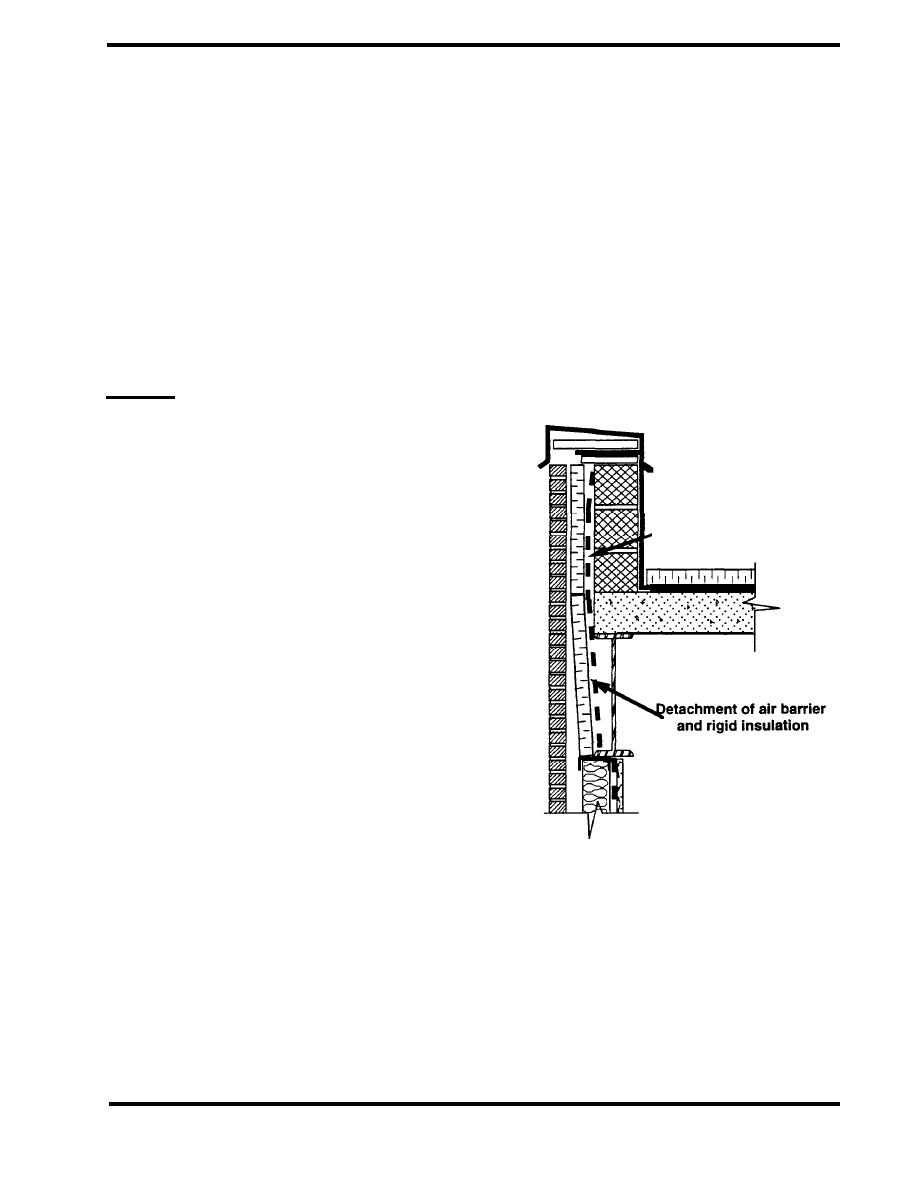
DESIGN/AIR
BARRIERS
Structural Integrity: All elements of the air barrier must be able to resist the imposed pressure
loads or be supported by something that can resist these pressures. If the air pressure difference
across the building envelope is not able to move air, it will work to displace those materials that are
preventing this airflow. If the pressure exceeds the capability of the air barrier system to support
this pressure load, then the system will fail, permanently destroying its ability to provide air-tightness.
In more specific terms, the air barrier system must resist peak wind loads, stack pressures and
(de)pressurization by ventilation equipment without rupturing or detaching from its support and must
not creep away from its supports or split at joints under sustained air pressures.
Example: A case of inadequate structural
UNACCEPTABLE
support of the air barrier in a parapet wall is
shown in Figure 3.1.2 (Quirouette 1989). The
wall consists of a brick veneer, an insulated steel
stud wall, a polyethylene sheet air barrier/vapor
retarder and an interior drywall finish. The
parapet consists of a brick veneer, rigid
insulation, polyethylene and concrete block
Air Barrier
backup. The rigid board parapet insulation was
spot adhered to the polyethylene, which ran from
the top of the wall studs, past the steel beam,
and up the parapet where it was sealed to the
parapet top plate. Because the polyethylene
was not adequately supported, it moved back
and forth with the wind pressures and eventually
tore. The movement of the polyethylene pulled
the rigid insulation from its original location,
which in turn pulled the polyethylene further out
of place. The parapet air seal was rendered
totally ineffective, and the effectiveness of the
insulation was severely degraded.
Figure 3.1.2 Failure of Air Barrier
Integrity (Quirouette 1989)
PAGE 3.1-3


 Previous Page
Previous Page
